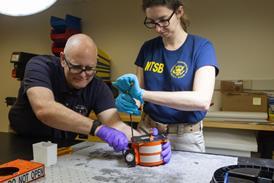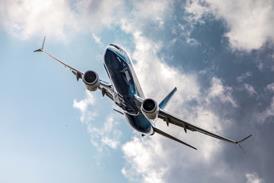If the single-engined business jet is such a good idea, why are the big corporate-aircraft manufacturers staying away from it? Certainly, as a group, they have not shied clear of entering a new market when one has been identified before - even if not every manufacturer has entered every new niche. That has certainly been the case in all the recent developments: Bombardier and Gulfstream have entered the ultra-long-range market; Airbus and Boeing have ventured into the market for large, long-range business jets derived from airliners; and Galaxy and Raytheon are vying for the super mid-size sector.
In some of those markets, there has been real debate over whether there was actually demand there, and whether or not the sector was big enough to support two or more manufacturers. In all three cases, big established manufacturers decided that there was a market worth pursuing. In the case of the single-turbofan market, there appears not to have been that debate. Instead, a raft of new projects has sprung up, all of them from new entrants convinced that there is a vast, untapped market out there. Their conviction has been either dismissed out of hand or ignored by the established participants, leaving the business jet as the only form of personal transportation for which a single powerplant seems unacceptable.
It is easy to see some of the negative arguments on both the commercial and safety issues, but not to see why these points have so easily swayed the big manufacturers. True, the larger players are mostly used to relatively low-rate production of relatively expensive aircraft, and may not be geared for turning out larger numbers of cheaper machines. Yet Raytheon, for one, has the composites-production technology which most of the nascent manufacturers would use to build their jet singles, and intends to use it to produce its own future models.
True, the market for turbofan singles may be in a different part of the spectrum - away from the traditional customers used to spending tens of millions of dollars on an aircraft - but many of the established manufacturers have been active at the cheaper end of the market before, and some are still selling piston singles alongside their turboprops and business jets - Cessna and Raytheon, for example.
Perhaps the established manufacturers are concerned about the safety issues of single-engined operation, especially when some certification authorities still fly in the face of experience and hold out against approving commercial single-engined instrument-flight-rules operations. Yet the uncertainty in that market has not stopped the likes of Aerospatiale, Cessna, Pilatus, and now New Piper, from entering the turboprop-singles market on the gamble that, eventually, the operators of such aircraft will be freed of such restrictions.
Perhaps the established manufacturers would just say that they do not believe there is an economically significant market out there for single-engined business jets. That is not the view of the start-up companies: VisionAire, for instance, was created not from a desire to make aeroplanes so much as from a desire to satisfy a perceived market demand from smaller companies for more-affordable corporate jets.
Certainly the experience of the fractional-ownership operators in uncovering a vast new market, by reducing the cost of entering business aviation, suggests that there are thousands of companies and individuals interested in owning or part-owning a business aircraft - if the price is right. The growing orderbooks for the likes of the VisionAire Vantage and the Century Jet, which cost less than many Americans spend on their houses, would seem to support their manufacturers' belief in the potential of the market which they, alone, have decided to enter.
So what, on the surface, seems a promising market is being left to a group of small companies among which - if previous experience is anything to go by - there will be a very high infant-mortality rate. That could leave the demand untapped - and leave engine-makers which are investing in the single-turbofan market, like Williams, with a problem. If the established business-aircraft manufacturers know why this market should be left alone, perhaps they could tell the rest of the industry?
Source: Flight International























